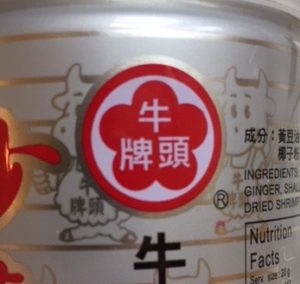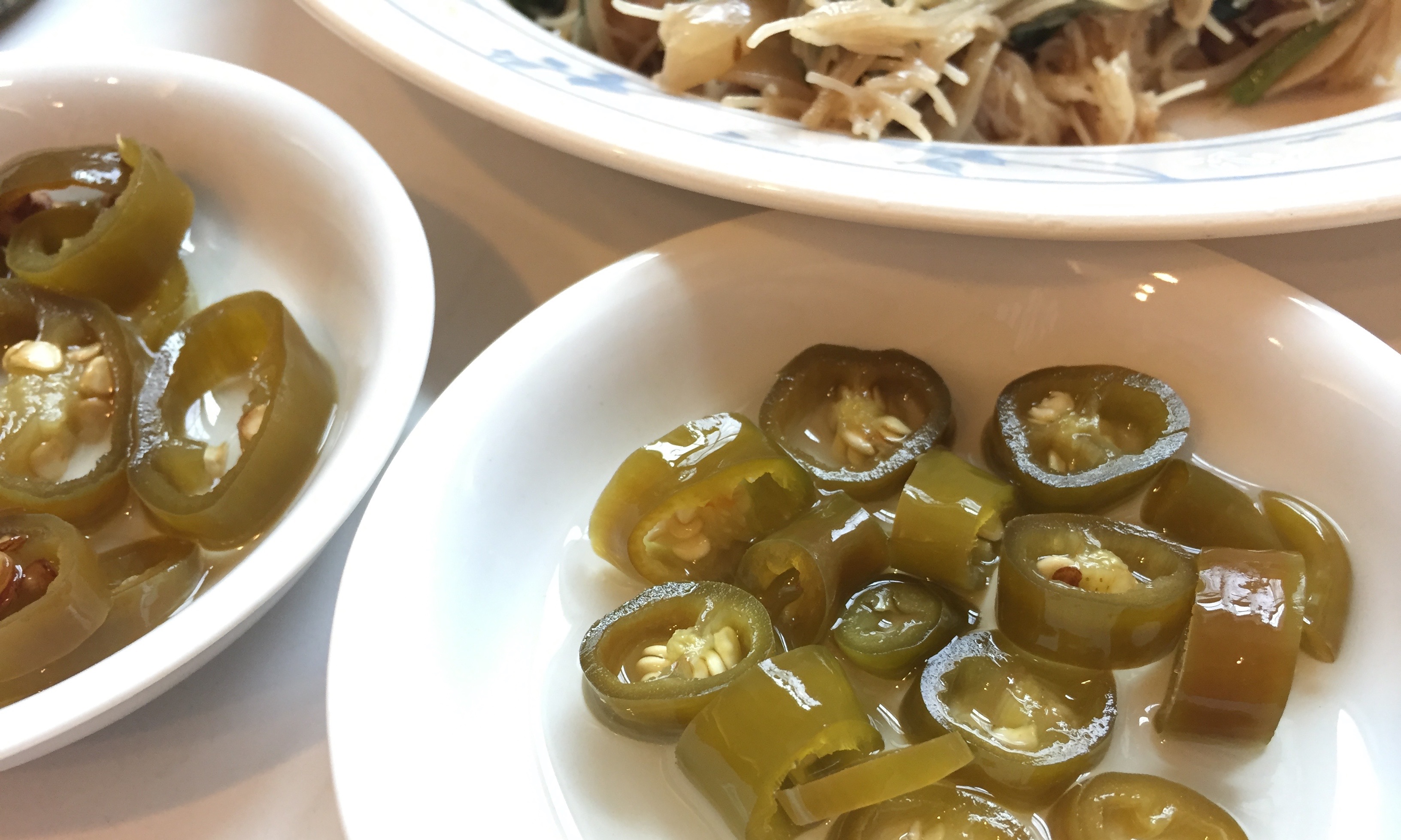A favorite sauce in Taiwan, Sha Cha Jiang is sometimes called Satay Sauce or Barbecue Sauce which to me are misnomers. It doesn’t taste anything like the peanut-based, spicy Satay Sauce that we in south east Asia eat with satay, or barbecue on skewers. Neither does it taste like our barbecue sauce.
Sha Cha Jiang (jiang means sauce) is also spicy. Its ingredients include chili, garlic, shallot, soy bean, brill fish and dried prawn or shrimp.
The sauce has great texture. I hate to describe it like this; it’s a little gritty, like the texture of saw dust. I think that roughness is from the dried shrimp that has been pulverized. But Sha Cha Jiang is super tasty. I love it.


The most popular brand in Taiwan is the tin can on the left in the pictures above, the Niu Tou Pai or Bull Head Brand. You can see an image of a yellow bull on the can. The glass jar on the right with the image of a yellow chef is a different brand, but a close copy. If you don’t read Chinese, you might mistake them to be the same brand.
 My preferred one is the Bull Head Brand which has the Taiwan plum blossom five-petaled logo (pictured on the right). You can buy Bull Head on Amazon.
My preferred one is the Bull Head Brand which has the Taiwan plum blossom five-petaled logo (pictured on the right). You can buy Bull Head on Amazon.
Note: Make sure you get the one that just says Barbecue Sauce.
This is because Bull Head Brand also has a newer, different flavor of Sha Cha sauce that is sold as Hot and Spicy Barbecue Sauce. The two cans are almost identical. The second flavor is the Ma La spicy. Ma La comes from Sichuan hot peppercorns. Ma la is translated numbing and spicy. Ma is the same word for anesthetic; the pepper is really ma. It makes my mouth feel like I had a shot of Novocaine. Not my favorite but people love ma la. So look carefully.
People from Taiwan use Sha Cha Jiang in Huo Guo or hot pot. In Taipei, we used to crack a raw egg, remove the white and add the yolk to the sauce. It’s tasty. I don’t do it in the U.S. For more on Huo Guo or Hot Pot, click here.
Instead I like to blend the sauce with my own Ginger Scallion Sauce, and Deep Fried Garlic.
Sha Cha Jiang is also used in stir fry. Add a spoonful of it to fried beef, chicken or vegetables.



